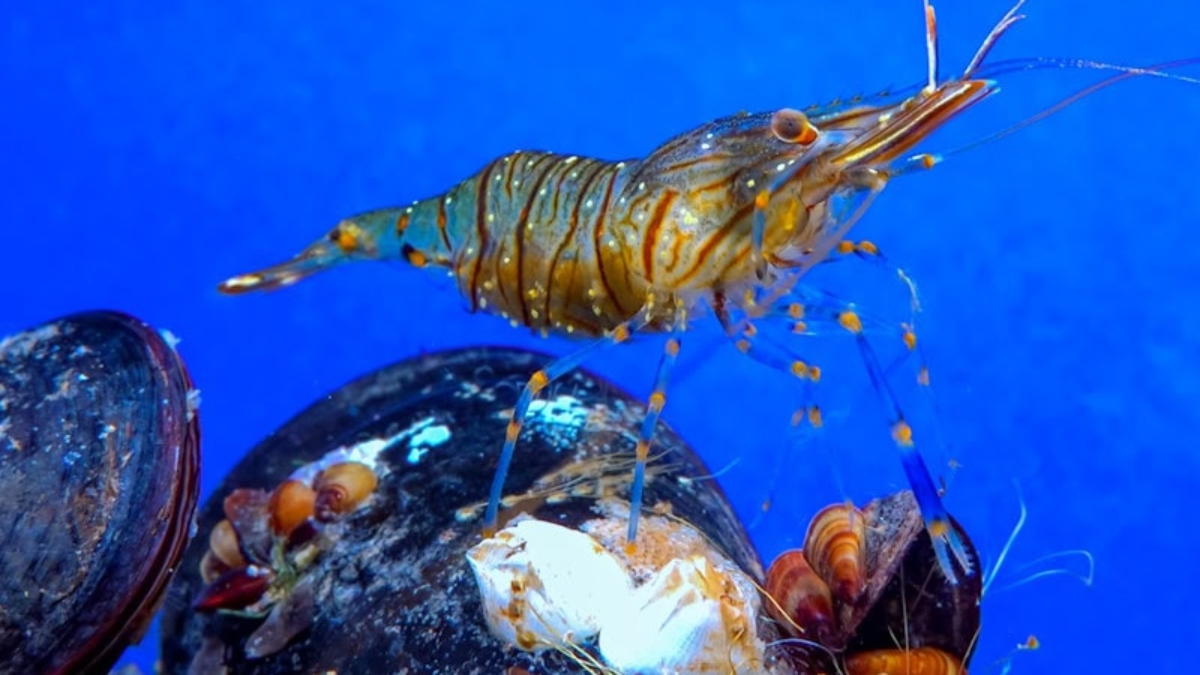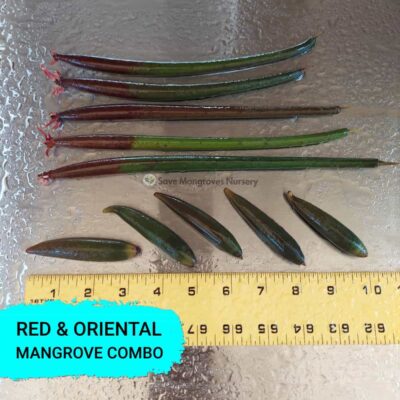Mangroves are more than just unique coastal plants; they can play a transformative role in your aquarium, especially when it comes to the health and well-being of your invertebrates. If you’re considering adding these incredible plants to your aquarium, you’re in for a treat. Not only do they bring a piece of the natural world into your tank, but they also offer various benefits that can enhance the life of your aquatic invertebrates.
Understanding Mangroves: Nature’s Coastal Guardians
What Are Mangroves?
Mangroves are trees and shrubs that thrive in coastal areas where they often encounter salty and brackish water. These plants have adapted to their challenging environment by developing specialized roots that can filter salt and breathe air. This makes them incredibly hardy, capable of surviving in a variety of conditions, including your aquarium.
🛑 Mangrove Fact:
Mangroves can absorb up to four times more carbon dioxide than tropical rainforests, making them powerful allies in the fight against climate change!
The Benefits of Mangroves for Aquarium Invertebrates
1. Natural Filtration System
One of the standout benefits of adding mangroves to your aquarium is their ability to act as a natural filtration system. Mangroves can absorb excess nutrients like nitrates and phosphates, which are often problematic in aquariums.
Good: ✔ Mangroves reduce harmful toxins, creating a healthier environment for your invertebrates.
Bad: ❌ If not maintained, dead mangrove leaves can decay, leading to unwanted debris and potential water quality issues.
2. Providing Shelter and Hiding Spaces
Mangroves’ root systems are intricate and expansive, offering plenty of hiding spots for your invertebrates. These roots create a natural habitat that mimics the wild, providing your invertebrates with shelter from more aggressive tank mates and a place to explore.
Good: ✔ Enhances the natural behavior of invertebrates by providing safe spaces.
Bad: ❌ If roots become overgrown, they may compete with other plants for space.
3. Oxygenating the Water
Like all plants, mangroves engage in photosynthesis, which helps to oxygenate the water. This process can be particularly beneficial for invertebrates that thrive in well-oxygenated environments.
Good: ✔ Improves water quality and supports the respiratory health of invertebrates.
Bad: ❌ Requires proper lighting to ensure effective photosynthesis.
🛑 Mangrove Fact:
The roots of mangroves are a natural nursery for many marine species, including fish and invertebrates, making them critical to coastal ecosystems!
How to Care for Mangroves in Your Aquarium
Light Requirements
Mangroves need plenty of light to thrive, ideally 10-12 hours a day. LED lights are often the best choice because they provide the full spectrum of light needed for photosynthesis without adding too much heat to the tank.
Good: ✔ LED lights are energy-efficient and customizable to your tank’s needs.
Bad: ❌ Fluorescent lights may not provide the full spectrum needed, potentially stunting mangrove growth.
Substrate and Root Management
Mangroves do not need to be fully submerged, but their roots do need to be anchored in a suitable substrate. Sand or a mix of sand and gravel often works well. It’s essential to regularly check and prune the roots to prevent them from taking over the tank.
Good: ✔ Proper root management helps maintain balance in the tank and supports the health of other plants.
Bad: ❌ Neglecting root care can lead to overcrowding and nutrient competition.
Water Conditions
While mangroves can survive in a range of salinities, they generally prefer slightly brackish water. However, they can also adapt to freshwater conditions, making them versatile additions to any tank.
Good: ✔ Adaptable to various water conditions, making them suitable for different types of aquariums.
Bad: ❌ Sudden changes in salinity can stress the plant, so adjustments should be made gradually.
🛑 Mangrove Fact:
Mangroves have evolved to live in saline environments by excreting excess salt through their leaves or storing it in their bark and roots.
Pros and Cons: Are Mangroves Right for Your Aquarium?
Pros
- Natural Filtration: Mangroves help maintain water quality by absorbing excess nutrients.
- Invertebrate Habitat: Provides natural shelter and promotes healthy behavior in invertebrates.
- Aesthetic Appeal: Mangroves add a unique and exotic look to your tank.
Cons
- Maintenance: Requires regular care, including root trimming and leaf removal.
- Space: Mangroves can take up significant space in smaller aquariums.
- Lighting Needs: Proper lighting is crucial, which may require an investment in quality LED lights.
Bringing Mangroves Home: A Perfect Match for Invertebrate Lovers
At Save Mangroves Nursery, we understand the incredible benefits that mangroves can bring to your aquarium. Our healthy Live Red Mangrove Plants are ready to add to and naturally filter your Saltwater, Freshwater, or Brackish Aquarium tanks. We ship out to all 50 states daily, ensuring that your invertebrates can enjoy the natural filtration and shelter that mangroves provide.
Conclusion
Adding mangroves to your aquarium isn’t just about enhancing the aesthetic appeal; it’s about creating a thriving, healthy environment for your invertebrates. With their natural filtration capabilities, shelter-providing roots, and oxygenating abilities, mangroves are truly a match made in heaven for any invertebrate-focused aquarium. Whether you’re a seasoned aquarium enthusiast or just starting, mangroves can elevate your tank to a new level of ecological harmony.
Explore our range of Live Red Mangrove Plants at Save Mangroves Nursery, and start giving your invertebrates the environment they deserve today!
Best seller products
-
18”-24” Red Mangroves With Roots & 2-4 Leaves
Price range: $34.99 through $87.99 -
10”-14” Red Mangroves With Roots & 2-4 Leaves
Price range: $19.99 through $47.99 -
28″ Red Mangrove Tree – Fully Mature Plant
Price range: $0.00 through $230.00 -
[RARE] Orange Oriental Mangroves Propagule Seeds
Price range: $19.99 through $79.99 -
30″ Red Mangrove Tree – Fully Mature Plant
Price range: $0.00 through $180.00 -
Red & Oriental Mangrove Combo Bundle
Price range: $29.99 through $44.99
 Cart is empty
Cart is empty 




![[RARE] Orange Oriental Mangroves Propagule Seeds](https://savemangroves.com/wp-content/uploads/2025/07/Oriental-Mangrove-Seeds-Save-Mangroves-Nursery-400x400.jpg)



Add a Comment
You must be logged in to post a comment